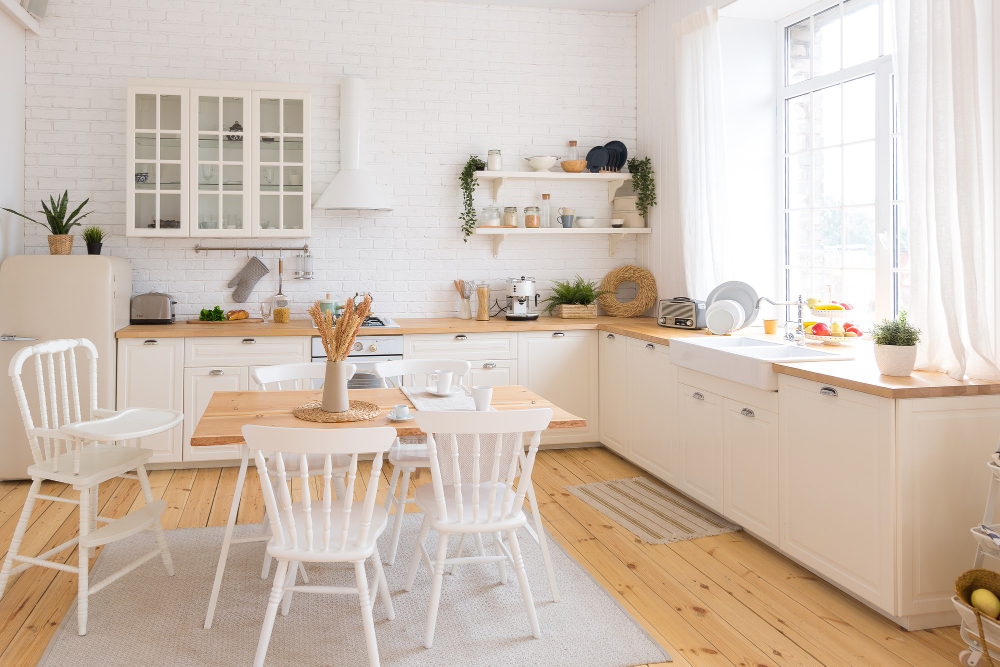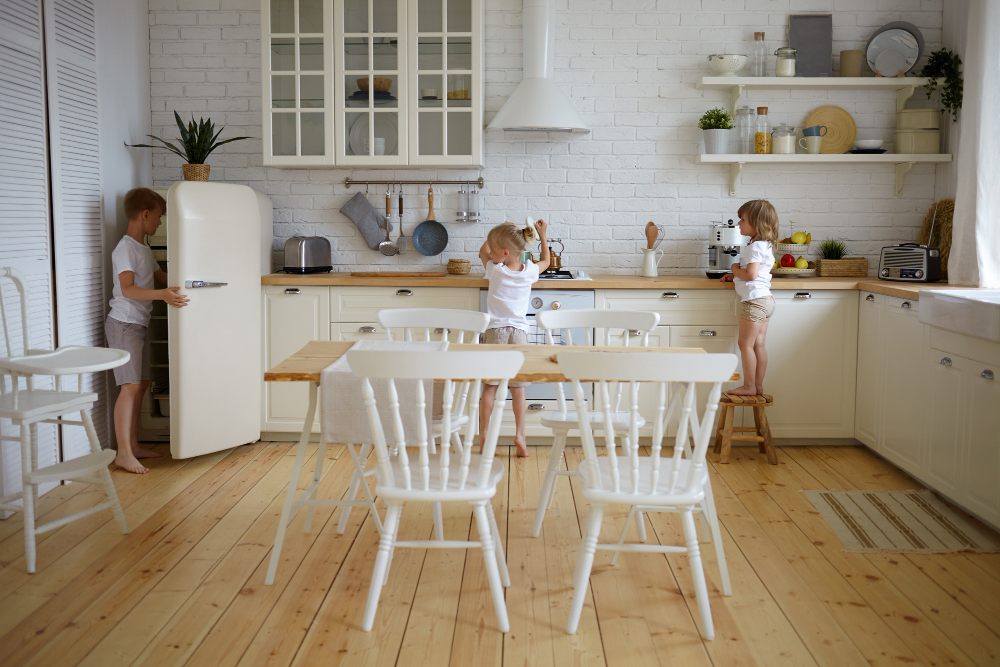Last updated on
In a world where the commitment to sustainability and environmental preservation is becoming increasingly important, many homeowners are choosing to revamp their spaces in an eco-friendly manner. The kitchen, often regarded as the heart of the home, is an ideal starting point for such endeavors.
This guide explores the top ways to rebuild your kitchen in an eco-friendly manner, focusing on materials, appliances, and innovative design ideas that can make your culinary space more sustainable, energy-efficient, and environmentally conscious. Let’s embark on a journey to create a kitchen that is as good for you as it is for our planet.
Choosing Sustainable Materials

When planning an eco-friendly kitchen remodel, the choice of materials is paramount. Opt for materials that are sustainably sourced, recycled, or reclaimed. For instance, bamboo is a popular choice for cabinets and flooring due to its rapid growth rate and durability.
Consider utilizing recycled glass for countertops or backsplashes. Not only does it offer a unique aesthetic, but it also reduces the strain on our landfills.
Similarly, reclaimed wood is a fantastic option that adds a rustic touch while saving trees from being cut down. Cork is another eco-friendly material worth considering. It’s sustainable, recyclable, and provides excellent insulation, ensuring your kitchen stays warm in winter and cool in summer.
Storage Solutions for Sustainability
Open shelving made from sustainable materials allows for easy organization and adds a modern touch to your kitchen. For a more unique look, consider using salvaged or upcycled materials such as old crates, pallets, or vintage ladders. These options not only reduce waste but also add character to your kitchen.
Another sustainable storage solution is utilizing glass jars for pantry items rather than plastic containers. This reduces single-use plastic waste and adds a charming aesthetic to your shelves.
As the folks behind Kitchen Cabinets Calgary add, cabinets take up the majority of space in the kitchen. By default, they become the focal point. So, choosing sustainable and visually appealing options is key.
Energy-efficient Appliances

Replacing old appliances with energy-efficient models is one of the most impactful ways to make your kitchen greener. Look for products with the Energy Star certification, which guarantees they meet strict efficiency guidelines set by the U.S. Environmental Protection Agency. Consider induction cooktops, which are more efficient than traditional gas or electric ranges.
Modern refrigerators and dishwashers are designed to conserve energy and reduce water usage, significantly lowering your utility bills and environmental footprint. And don’t forget about the smaller appliances. Even replacing your old toaster or coffee maker with energy-efficient models can make a difference. Every bit of energy saved counts towards a greener planet.
Water Conservation Measures
Water conservation is another critical aspect of an eco-friendly kitchen. Install low-flow faucets and aerators to reduce water usage without compromising pressure. A dual-flush toilet can also significantly cut down on water consumption.
Consider a tankless water heater, which heats water on demand, saving energy and reducing water waste. Moreover, ensure your dishwasher is full before running it and avoid the pre-rinse to save even more water.
Rainwater harvesting is another option. Collected rainwater can be used for purposes like watering plants, washing dishes, and flushing toilets. It’s an excellent way to conserve water and utilize a free resource. Just make sure to consult local regulations before installing a rainwater harvesting system.
Natural Lighting and Energy-efficient Bulbs
Leveraging natural light reduces the need for artificial lighting, conserving energy. Consider enlarging windows or adding a skylight to let in more sunlight during the day. When artificial light is needed, opt for LED lights, which use significantly less energy than traditional light bulbs.
Additionally, under-cabinet lighting can provide focused light for cooking tasks, reducing the need for overhead lights. Dimmer switches also allow you to adjust the light levels, conserving energy when full brightness isn’t needed.
At night, choose task lighting over general lighting to save energy. For example, use a small lamp for reading recipes instead of lighting up the entire kitchen. And remember to turn off lights when not in use. Keep in mind that small changes in lighting can add up to significant energy savings over time.
The journey towards an eco-friendly kitchen is a mindful and rewarding one. By choosing sustainable materials, opting for energy-efficient appliances, and implementing water conservation measures, you can significantly reduce your environmental footprint. Additionally, optimizing natural lighting and switching to LED bulbs can contribute to energy conservation.
Every step towards sustainability brings us closer to preserving our planet for future generations. Whether you are planning a complete kitchen remodel or minor updates, these eco-friendly strategies can help you design a kitchen that is not only stylish and functional, but also kind to the Earth.
Table of Contents




